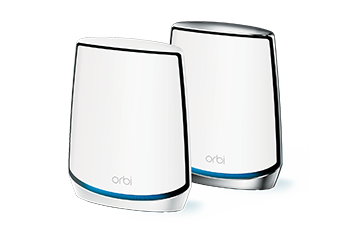In August-September 2008, there has been a fair bit of talk in the IT press about the new IEEE 802.11r standard for wireless networks. It isn’t a new waveband or transmission standard for these networks.
Instead it is an improved method of handling the “handover” procedure when a wireless-network client moves between two access points in a multi-access-point network. The idea behind this is to make the handover process hard to notice if you are using a multimedia service which works with streamed audio or video like VoIP or audio / video streaming. The same feature will also benefit multi-machine multi-player gaming such as Internet-hosted online gaming because everything that is part of the game is kept in sync, thus making sure that you can “frag” the opponent there and then. With current technology, if you move between different access points while using a multimedia service, you will notice an obvious “glitch” because of the requirement to re-associate with the network when in the new access point’s area.
The improvement is based on a “work-ahead” procedure where the client will log in with access points of the same “extended service set” while utilising the current access point. Then it will “switch over” to whichever access point has the best signal, thus avoiding unnecessary glitches.
The main issue with this technology, like any new standard being introduced, is how it can work with existing networks and equipment. As well, there is the issue of an upgrade path for existing equipment. In the first situation, would 802.11r-based clients be able to achieve the fast handover with wireless networks that work with current technology and would 802.11r-based access points work with existing WiFi clients. This also includes wireless networks where some access points may be 802.11r-enabled and some may be on existing technology. This would typify operating environments where a gradual roll-out is implemented because there will be an initial price premium for newer equipment being equipped with 802.11r and it would still wouldn’t be cost-effective to replace all access points at the same time. This brings me to what will be discussed in the next paragraph regarding existing equipment.
The second situation would determine what is needed to be done to an existing network to roll out the new technology. Could this be achieved through a firmware or software upgrade on existing equipment or would it require totally-new equipment to be deployed? This issue would be very pertinent when it comes to small wireless networks where one of the access points is built in to a wireless router that is on the network-Internet edge. It also would encompass most outdoor access points and, of course, those HomePlug-based wireless access points like the Netcomm NP-290W / Solwise PL-85PEW which I have mentioned about in this blog.
This issue may not be exposed in the small-network space because the typical small wireless network is based around only one access point — the one built in to the router at the network’s “edge”. But as I have mentioned in this blog about setting up multi-access-point wireless networks which have an Ethernet or HomePlug wired backbone as a way of extending the wireless network or conquering wireless-network reception difficulties, the issue of the 802.11r “fast-handover” technology will have to be exposed to this class of network. This is important if the network is being used for VoIP, streamed IP-based multimedia or online-gaming “frag-fests”.

